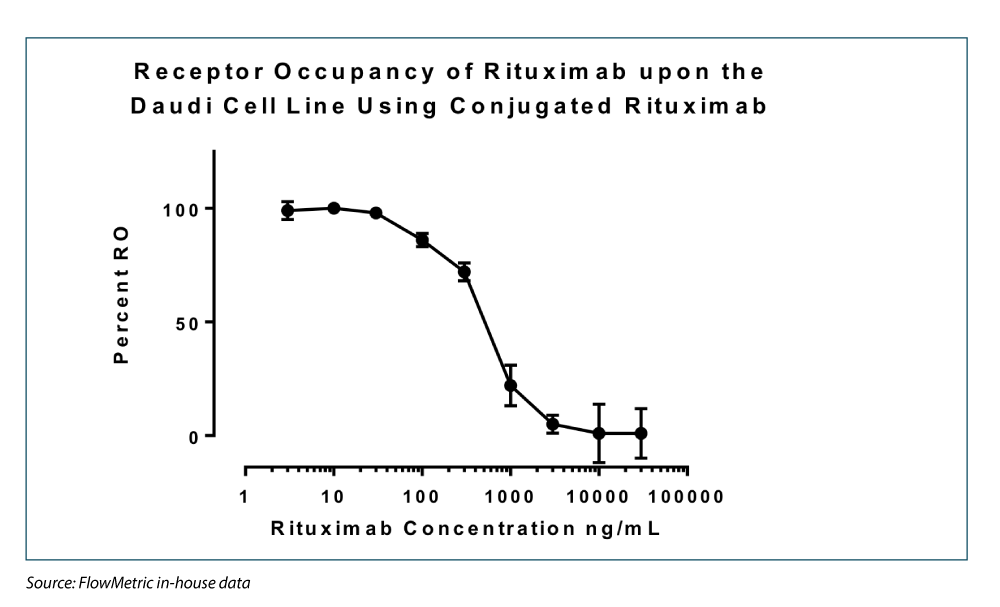Immunotherapeutic molecules currently being used in the clinic are powerful immune modulators, but their effectiveness can be inconsistent between patients. Clinicians and scientists use different assays to evaluate why immunotherapies fail in the clinic. The flow cytometry-based receptor occupancy (RO) assay is a critical tool for evaluating the effectiveness of immunotherapies in the clinic. Here are three features of flow cytometry-based RO assays that give them clinical value.

- Receptor Specificity: RO assays can measure binding of an immunotherapeutic molecule to a specific receptor. In certain clinical failures, RO assays may identify cell populations that have low or no expression of a target of interest, and this can explain why a treatment has failed. RO assays can also measure how abundant a receptor is on a specific cell and what fraction of this receptor is bound by an immunotherapeutic antibody or molecule. If most of the receptors are not bound, then the treatment may also be ineffective.
- Kinetics: RO assays can be executed on clinical samples that are collected at several different times after treatment. Data from these assays can convey to clinicians how strong the binding interaction is between the immunotherapeutic antibody and the target receptor, and if this complex is internalized into cells over time. Depending on the therapeutic target, this kinetic data may provide insight into the effectiveness of a therapeutic antibody.
- Customization: Flow cytometry-based RO assays can be customized for specific cell subsets using validated staining panels and fluorescently labeled therapeutic antibodies or molecules. This range of customization allows clinicians to measure RO in different cell types in a single patient and better evaluate how and where a therapeutic molecule is functioning during clinical use.
RO assays for clinical samples must typically be executed under stringent GLP or GCP conditions, including the use of a validated RO assay. Consider working with an expert in clinical sample testing to assure proper sample handling and accurate data collection.

